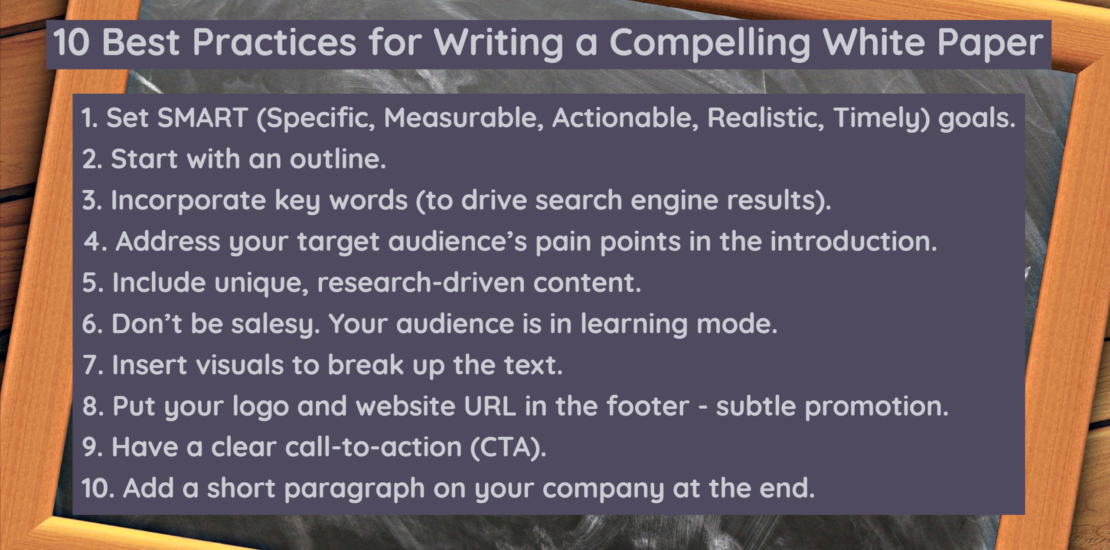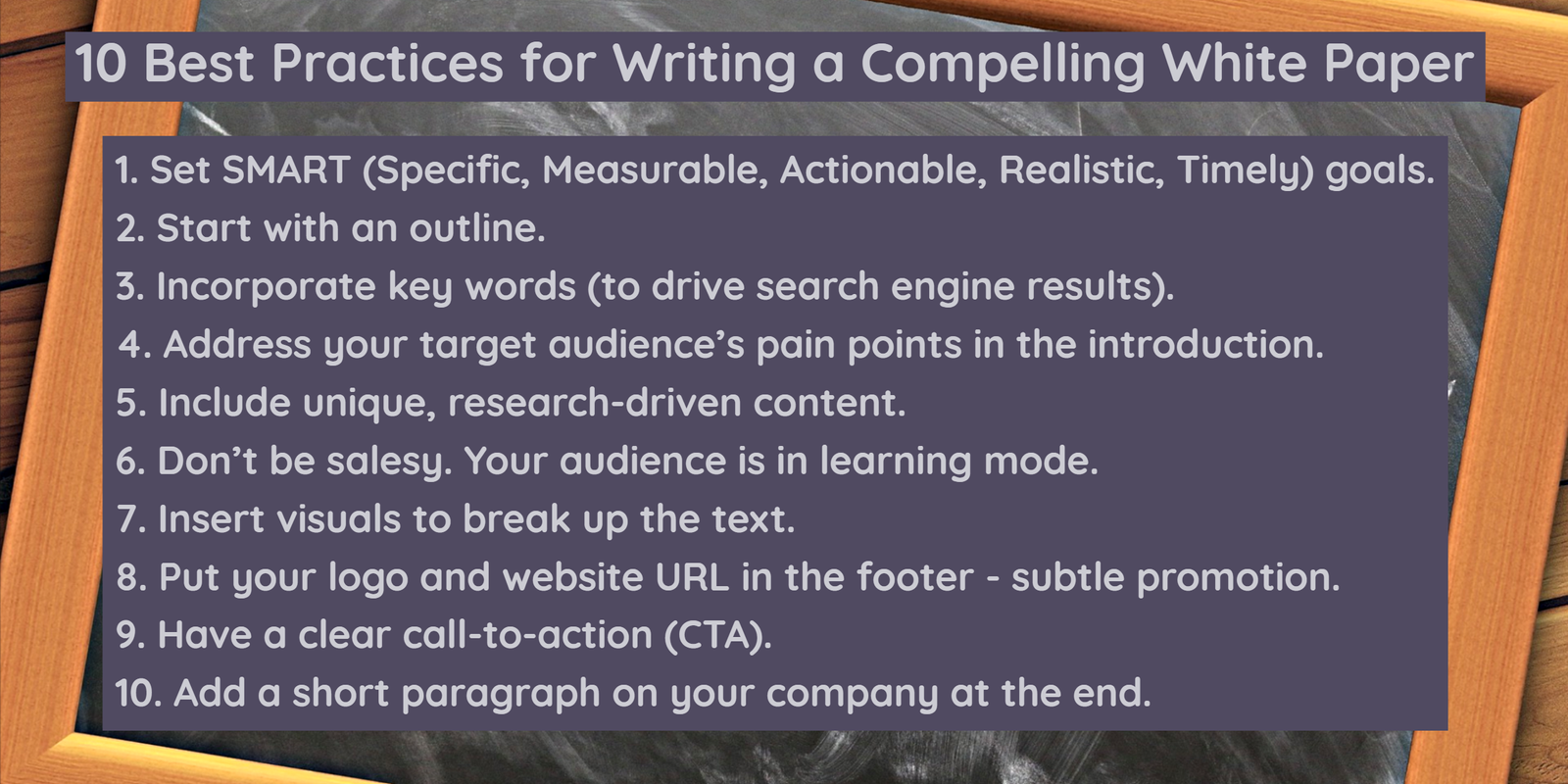- September 3, 2019
- Posted by: Stacey Wisniewski
- Category: Marketing Strategy

Introduction – What is a white paper?
People sometimes confuse research reports and white papers. Research reports are typically the results of months – sometimes years – worth of research, conducted by a particular company, institute or government entity. These reports are not produced for commercial value. Instead, they are meant to be shared with, delivered to, or consumed by a like-minded audience.
White papers, on the other hand, are marketing tools that are produced by companies or individuals who have insight into a particular subject. While white papers could (should) include research, their primary objectives are different. White papers are written to:
- Educate a B2B target audience on a certain topic
- Showcase an individual’s or company’s knowledge on a particular subject
- Build brand equity and strengthen perceived value
- Convince prospects to take a desired action (e.g. visit your website, provide contact information in exchange for the white paper, schedule a demo of your products, or call you to learn more about your services).
Do people actually read white papers?
White papers are now the #1 most valuable piece of content in the B2B buyer’s journey. Statistics from a recent Forbes article confirm it.
- 89% of B2B buyers use the Internet in their research process.
- 75% of B2B buyers said that a winning vendor’s content had a significant impact on their choice.
- 82% of B2B buyers rely heavily on white papers (#1) in making their purchasing decisions. Other content includes:
- Webinars (78%)
- Case studies (73%)
- E-books (67%)
- Infographics and blog posts (66%)
Here are 10 Best Practices for writing successful white papers.
- Set SMART (Specific, Measurable, Actionable, Realistic, Time-Sensitive) goals for the white paper. Do you want your audience to visit your website, learn more about your solutions, schedule a demo, join a webinar, call you for a quote? Whatever the action is that you want them to take, determine it – and tell them to do it at the end of the white paper (see #8 – “Have a clear call to action”).
- Start with an outline. It seems simple, but writing an outline is the best way to organize your thoughts and ensure that you are telling a compelling, thoughtful story.
- Determine key words (to drive search engine results). Whenever you develop content, you should think about it from the audience’s perspective. What words would they use when they are performing an Internet search on this subject? If possible, use those keywords in your title, subtitle, and body of the white paper.
- Address your target audience’s pain points in the introduction. Some people will not have time to read the entire white paper (or want to). It is important to write an introduction that captures their interest. Discuss your prospects’ pain points and how the white paper will provide solutions.
- Include unique, research-driven content. B2B buyers are reading your white paper to become better educated. Teach them something new. Whether you have primary research from customers, secondary research from a number of public/private sources, or best practices from years of experience, share them. Your audience will see you and your company as experts they can trust.
- Don’t be salesy. Your audience is in research-mode – they want to learn. Win them over by providing valuable insights and a solution to their problem. Introduce your capabilities in a short overview about your company – AT THE END – but not before (see #9 – Add a short overview about your company at the end).
- Insert visuals to break up the text. Your content is always the most important part, but you don’t want your readers to get bored. Use relevant images and add charts and graphs to show statistics and trends. Create a graphic in PowerPoint and upload it as a JPG. Add a quote in a text box with a colored background.
- Put your logo and website URL in the footer. You are not making a sales pitch in your white paper, but you can – and should – promote your company in subtle ways.
- Have a clear call-to-action (CTA). Whether you want the audience to visit your website, schedule a demo, or call you for more information, specify it at the end – in bold. For example:
“To learn more about our solutions, go to www.mycompany.com/solutions or call us anytime at 1-800-244-5500.”
- Add a short paragraph on your company at the end. After the call to action, write a short summary of your business, including capabilities that address the pain points in the white paper (see below for WIZ’s example).
Learn more about WIZ Advisors B2B Content Marketing Services here.
WIZ Advisors is a B2B marketing agency in Alexandria, VA that helps its clients drive brand awareness and lead generation through high quality content and digital promotion. The WIZ Method is a three-step process to drive awareness and lead generation that begins with the creation of a research-driven, industry white paper. Learn more about WIZ Advisors by visiting our website at www.wizadvisors.com.
